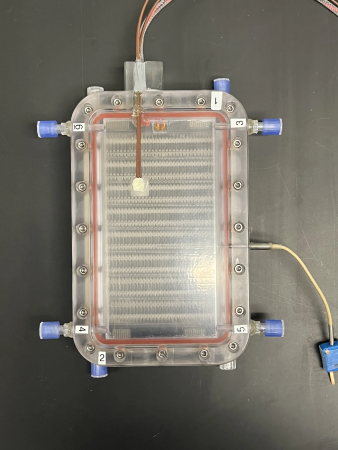CapiSorb Visible System (CVS)

Soaking Up Carbon Dioxide
CapiSorb Visible System (CVS) demonstrates replacing gravity with capillary forces to control liquids that can absorb carbon dioxide. Capillary forces are the interaction of a liquid and solid that can draw a fluid up a narrow tube, much like water soaking into a paper towel.
“Using liquid sorbents to capture carbon dioxide works great on Earth, but in microgravity, it’s a challenge,” said Co-investigator Grace Belancik. “This system’s geometry provides liquid control and passive transport in microgravity in the form of a continuous liquid flow loop.”
Data from the experiment could directly inform design of new carbon dioxide removal systems for future crewed missions to the Moon and Mars.
“Exploration missions require life support systems that are reliable as well as lightweight with low mass and volume,” said Co-investigator Mark Weislogel. “Systems like this one broaden the technological options for life support equipment in the direction of simplicity, which could reduce the need for maintenance, repairs, and replacement parts without sacrificing performance. CVS builds on years of fundamental and applied research of large-length scale capillary phenomena on the space station that cannot be studied on Earth.”



























